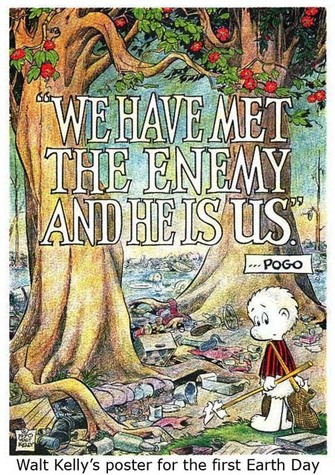« Prev Next »
 Spring's in full swing, a perfect time to celebrate our beautiful planet. For ways to be mindful of Earth today, be sure to check out Samantha's blog at Green Science. There are tons of ways to become involved and even the smallest idea can turn big. Indeed, even the founder of Earth Day didn't expect it would continue after the first year.
Spring's in full swing, a perfect time to celebrate our beautiful planet. For ways to be mindful of Earth today, be sure to check out Samantha's blog at Green Science. There are tons of ways to become involved and even the smallest idea can turn big. Indeed, even the founder of Earth Day didn't expect it would continue after the first year.
As an undergrad, Denis Hayes was involved in student protests against the Vietnam War and classified research sponsored by universities. Later as a graduate student at Harvard's Kennedy School of Government, he was asked to do an extracurricular project affecting public policy. Hayes already had an interest in the environment: as a child growing up in the town of Camas, Washington, he had been exposed to logging and paper mill pollution. When he saw an article calling for a day of teach-ins about environmental issues, he contacted a US senator from Wisconsin named Senator Gaylord Nelson to assist with the project.1
Soon Hayes became the full-time coordinator for a national campaign of teach-ins and on April 22, 1970, more than 20 million people across the US protested "for the environment and against pollution — then exemplified by the infamous Cuyahoga River fires and dying fisheries in the Great Lakes."2 After the day of environmental education, many of the participants wanted to continue with the project, but Hayes initially resisted, thinking the success couldn't be repeated. But he soon changed his mind and forty-one years later, Hayes remains the honorary chairman, while the event continues to be a day of eco-remembrance.
In addition to this role, Hayes also serves now as the president of the non-profit Bullitt Foundation, a group soon opening the Cascadia Center for Sustainable Design and Construction, which hopes to create "net-zero" office buildings.3 They are currently seeking certification to create "living buildings," which are completely off the grid while producing no carbon emissions. These designs involve innovations such as energy-producing photovoltaic panels, rain-catch plumbing, and composting systems. It seems to me that the idea behind this style of green building is that if infrastructures could be made inherently sustainable, then perhaps every day could be an Earth day.
Image Credit: Wikimedia
1. "'Environment May Eclipse Vietnam as College Issue." The New York Times. November 30, 1969.
2. Bland, Scott. "A Deeper Shade of Green." Stanford Magazine. March/April 2011.
3. Pryne, E. "Bullitt 'Green Building' Gets Go-Ahead." The Seattle Times. April 11, 2011.






















